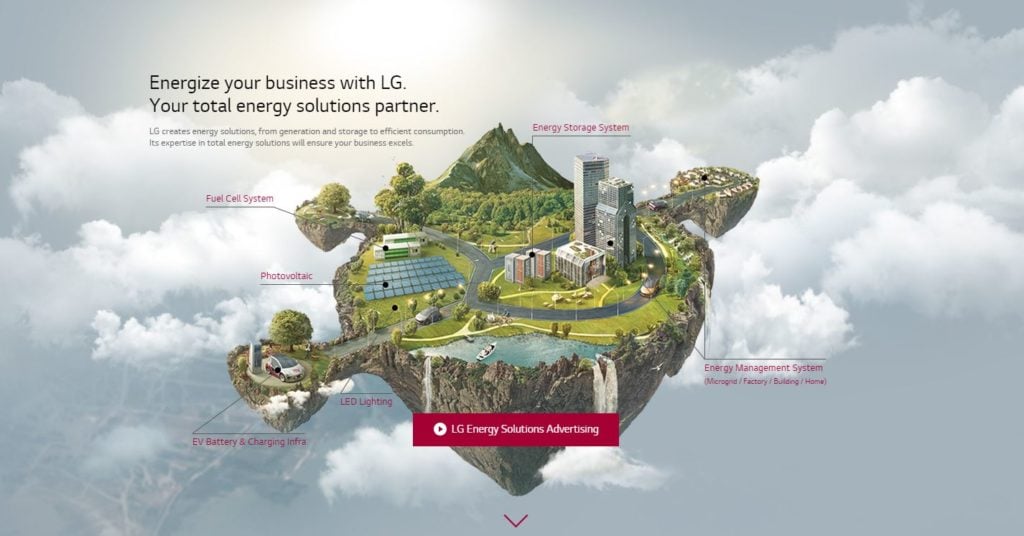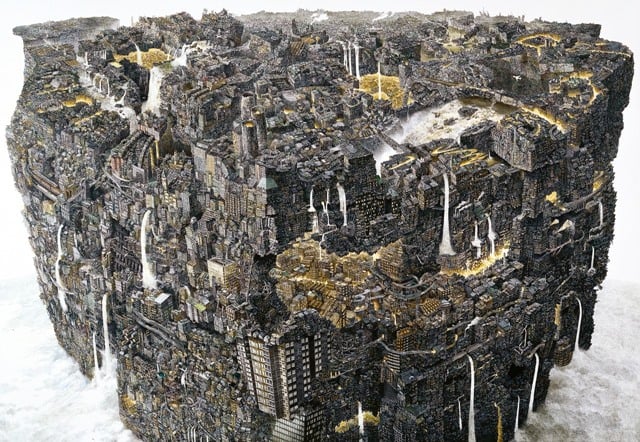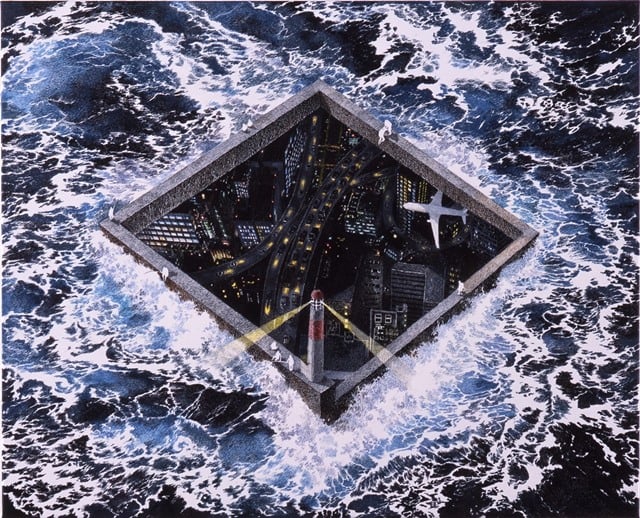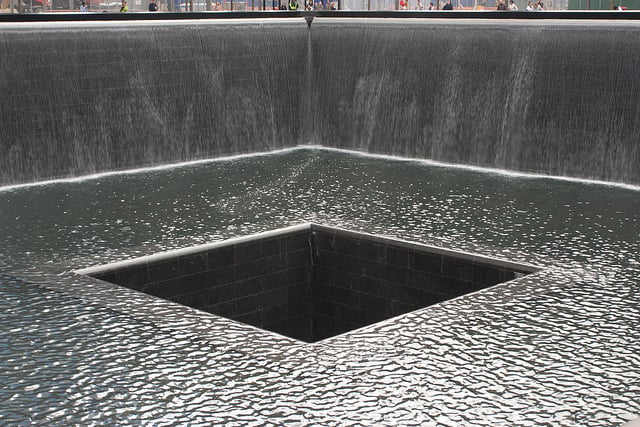Galleries
Did LG Energy Copy Manabu Ikeda’s Floating City in its Ads?
One is a floating corporate park, while the other looks more like an escape pod.

One is a floating corporate park, while the other looks more like an escape pod.

Brian Boucher

The image in an ad in a recent issue of Fortune magazine caught our eye around the artnet News offices recently for its striking similarity to a dystopian artwork.
Advertising LG Energy’s “energy solutions” for businesses, “from generation and storage to efficient consumption,” the two-page spread inside the magazine’s front cover shows a giant chunk of earth floating in the sky.
In front of a picturesque, happy little mountain in the background stand a couple of glass office towers in a grassy corporate park. There are solar panels and energy storage units; cute little electric cars scoot around between the offices and a charging station, and a flock of sheep grazes near the office building. (You get the idea.)
What’s funny about the image is its similarity to an image of a considerably more crowded and less verdant floating city by Japanese artist Manabu Ikeda, titled Ark.
Rocky and jammed with buildings, it looks, as its title suggests, more like something intended to pack in as many refugees as possible from a planet destroyed by war or climate change.

Manabu Ikeda, Ark (2005). Collection of Mori Art Museum, Tokyo.
Photo by Keizo Kioku, courtesy Mizuma Art Gallery, Tokyo.
While there are clear differences between the images, similarities also emerge. The underside of LG’s floating city is much like Ikeda’s, and both images feature water running off from the floating city in white streams.
Seoul ad agency LBest produced the ad, and a representative of the company told artnet News that the image had nothing to do with Ikeda’s work.
“Very interesting,” wrote Makiko Mikawa, of Tokyo’s Mizuma Art Gallery, which represents the artist, when informed of the ad. “I hope this is a coincidence.” Neither the gallery nor the artist had been contacted by representatives from LG Energy, she said.
However, images of floating cities have existed in popular culture for years. Recent examples include the 1980 film The Empire Strikes Back, where Cloud City floats above the planet Bespin—the site where Lando Calrissian hands over Han Solo to Darth Vader. And in the 1972 book Invisible Cities, Italo Calvino writes of Andria, a city in which the streets correspond to different planets’ orbits. There’s a rich history of floating cities in Japanese culture, from the 1990 anime series Gunnm (Battle Angel), which depicted the dystopian floating city of Zalem, as well as world-famous director Hayao Miyazaki’s 1986 film Castle in the Sky, which featured the flying city of Laputa.
Born in 1973, Ikeda earned an MA from the Tokyo University of the Arts, and now lives in Wisconsin. He’s had solo shows at the West Vancouver Museum and the Obuse Museum’s Nakajima Chinami Gallery, in Nagano, among other venues. He’s also been included in group shows at New York’s Japan Society Gallery and the Chazen Museum of Art, in Wisconsin.
This isn’t the only time the artist has come across a work that seemed surprisingly similar to his own.

Manabu Ikeda, Gate, 2010, pen, acrylic ink on paper, mounted on board. Photo by Kei Miyajima, courtesy Mizuma Art Gallery, Tokyo.
His 2010 work Gate depicts a roiling ocean, its waters broken by a huge concrete square under which a nighttime view of a city is visible from such a great height that a jet liner can be seen from above.

The 9/11 Memorial. Photo by Cameron Donaldson, via Flickr.
The combination of water and a square lends an unmistakable similarity to the 9/11 Memorial, designed in 2004 by architect Michael Arad with landscape architect Peter Walker, which replicates the footprint of the World Trade Center’s Twin Towers.
That design was submitted six years before Ikeda’s work, but the artist still found the likeness quite striking.
“Last year, Manabu visited there,” Makiko said. “He was really surprised.”